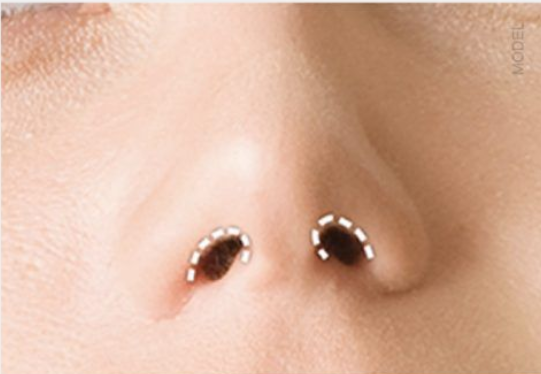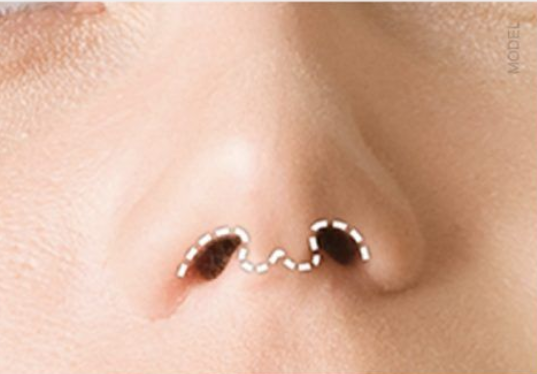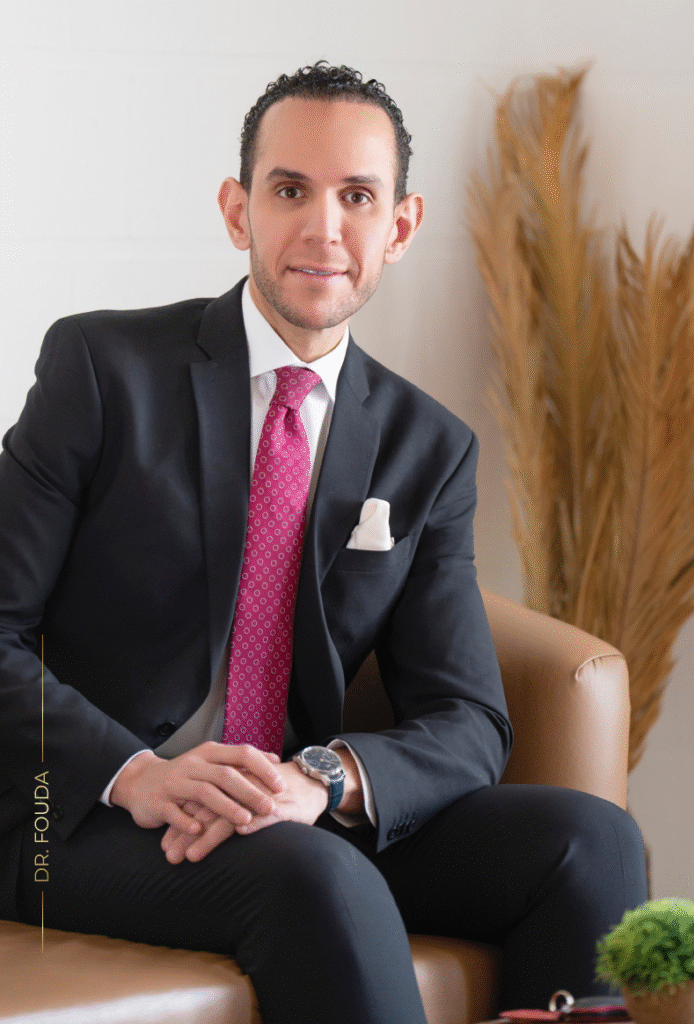Do you feel that your nose draws attention from the rest of your face or detracts from your overall facial appearance? Do you see your nose as out of proportion or misshapen? Do you have trouble breathing through your nose? A subtle nose job can make a big difference in your facial harmony. If you are unhappy with the overall appearance or function of your nose, you will probably benefit from rhinoplasty in Riyadh with Dr. Omar Fouda.
Whether you are interested in subtle or more noticeable changes to your nose, Dr. Omar Fouda can perform rhinoplasty to help you have the attractive nose you want. To get started, request a consultation online, or call our office at +(966) 57-858-7777. People from Saudi Arabia and Dubai visit him for rhinoplasty in Riyadh.
What is rhinoplasty?
Rhinoplasty, also called a nose job, is a surgical procedure that Riyadh plastic surgeon Dr. Fouda performs to reshape the nose. The nature of rhinoplasty is variable in its extent, but in general, the goal is to create symmetrical harmony among the facial features. This procedure can:
- Drastically alter the shape of the nose
- Simply tweak the tip
- Correct for bumps and indentations along the nasal bridge
- Modify the angle of the nose in relation to the upper lip
Am I a good candidate for rhinoplasty?
Candidates for rhinoplasty should be in good physical and emotional health. Dr. Fouda performs rhinoplasty for women and men of any age, as well as adolescents after their facial development is complete (usually age 15 to 18). A nose job can address cosmetic concerns or improve breathing function. He gives patients the nose they want by correcting one or more of the following concerns:
- Overall size when the nose is too big, small, or wide
- A nasal bridge that has a visibly large bump or hump from profile view
- A nasal tip that appears hooked, droopy, bulbous, or puffy
- Nostrils that flare disproportionately outwards
- A nose that is asymmetrical
The best rhinoplasty surgeon in Riyadh typically combines experience with artistic precision. When performing rhinoplasty, Dr. Fouda understands that patients of Asian, African-American, and Middle-Eastern heritage vary somewhat in their ideal result. He strives to attain the improvements they desire while retaining their unique anatomic characteristics.
How is rhinoplasty performed?
Rhinoplasty surgery in Riyadh is popular among those seeking facial balance. Dr. Fouda performs rhinoplasty using general anesthetic as an outpatient procedure. You will need to have an adult family member or friend drive you home the day of surgery. The details of the surgery will vary based on your needs. He may shave down a bump or hump on the bridge of the nose. To build up or reconstruct areas of the nose like the bridge or tip, he may use and implant or graft cartilage from the ear or rib.
In general, Dr. Fouda performs rhinoplasty using one of the following techniques:
Open rhinoplasty involves a small incision at the base of the columella, which is the strip of tissue between the nostrils. This area generally heals with a scar that is nearly invisible to the naked eye. The advantage of this approach is greater control over reshaping of the cartilage of the tip of the nose.
Closed rhinoplasty, also called endonasal rhinoplasty, is performed through incisions placed entirely within the nose. Typically, this technique leaves no external scars and involves a shorter recovery period than with the open technique.
Rhinoplasty Incision

Closed Rhinoplasty

Open Rhinoplasty
Dr. Fouda chooses the technique that is best suited to each patient’s preferences and desired improvements. He can perform secondary rhinoplasty, also called revision rhinoplasty, to improve unsatisfactory results of surgery by another physician. When appropriate, he can combine rhinoplasty with other facial cosmetic surgery procedures, such as a lip lift or chin augmentation (genioplasty). Techniques used in rhinoplasty surgery in Riyadh are aligned with global standards.
Can rhinoplasty correct a deviated septum?
Absolutely. Those who are plagued with sinus and breathing problems often find great respiratory relief after having a nose job. Although it’s not explicitly meant to correct a deviated septum (as septoplasty is), rhinoplasty can have the same effect as a septoplasty. When you meet with Dr. Fouda for your primary consultation, you may inquire as to whether your deviated septum can be corrected through rhinoplasty.
Additionally, patients with noses damaged in accidents often benefit from rhinoplasty.
What can I expect during recovery after rhinoplasty?
After your surgery, your nose will be sensitive. In most cases, the nose swells and may even bruise. Both swelling and bruising are normal after-effects of this procedure, and they are no cause for concern. We do advise that patients call our office if the swelling and bruising do not subside after a few weeks, though.
4 Steps to a Smooth Rhinoplasty Recovery
- Avoid tobacco products. They hinder your recovery and interfere with your body’s natural healing process.
- Do not exercise or lift heavy objects until you’ve fully healed. Light to moderate exercise is fine, but please check with Dr. Fouda before resuming intense workouts.
- Keep the splint or bandages in place as recommended by Dr. Fouda.
- Do not try any household pain remedies or take painkillers that were not prescribed by Dr. Fouda.
How much does rhinoplasty cost?
The cost for rhinoplasty in Riyadh depends on several factors at our practice, including the complexity of the surgery and the surgical technique performed. See our Rhinoplasty Costs page for more information.
While cost is a necessary consideration when deciding whether to have rhinoplasty, your choice of surgeon should be the highest priority. Because rhinoplasty is the most challenging aesthetic procedure to perform, it is important to choose a surgeon who is highly trained and experienced in performing the procedure, such as Dr. Fouda.
When will I see my results?
The effects of a nose job appear gradually as swelling dissipates, and the nose adjusts to its new shape. After about 4 to 6 months, your nasal contours will refine themselves, and you will notice your beautiful new nose unveiling itself. Rhinoplasty is permanent, and unless you suffer a serious nasal accident, you can enjoy your results indefinitely.



